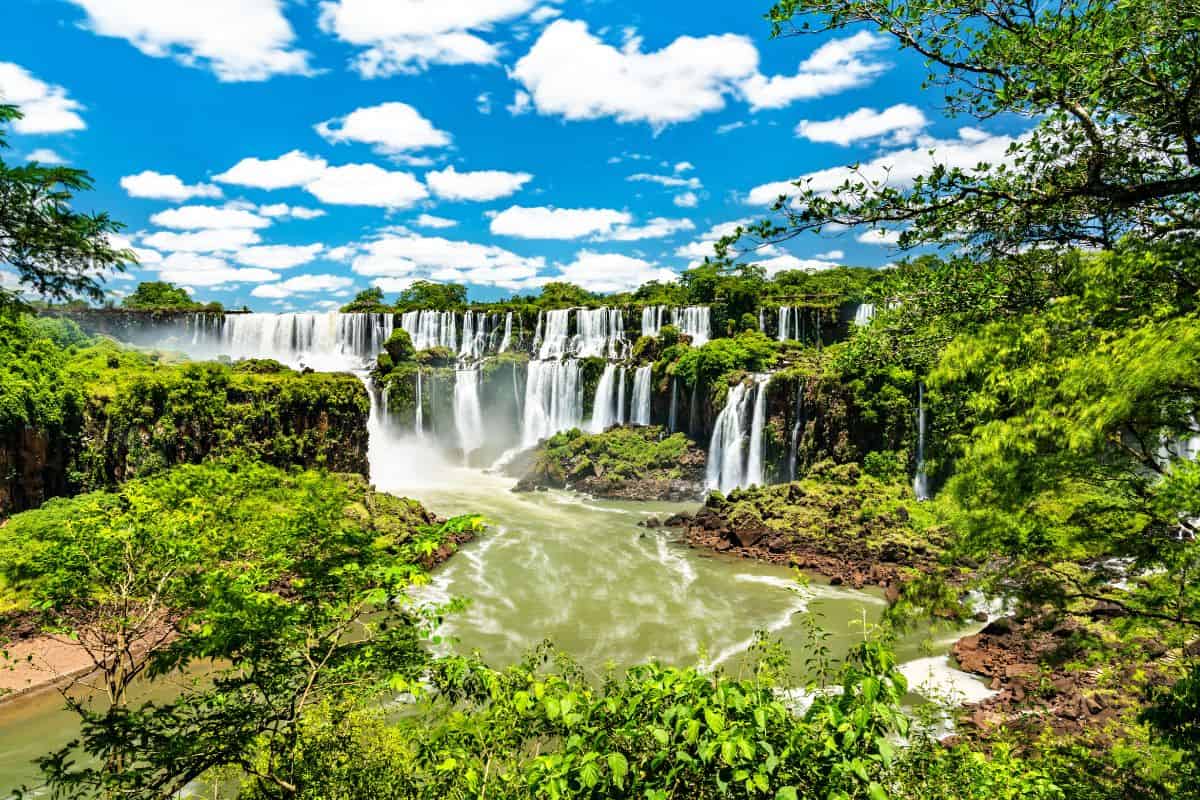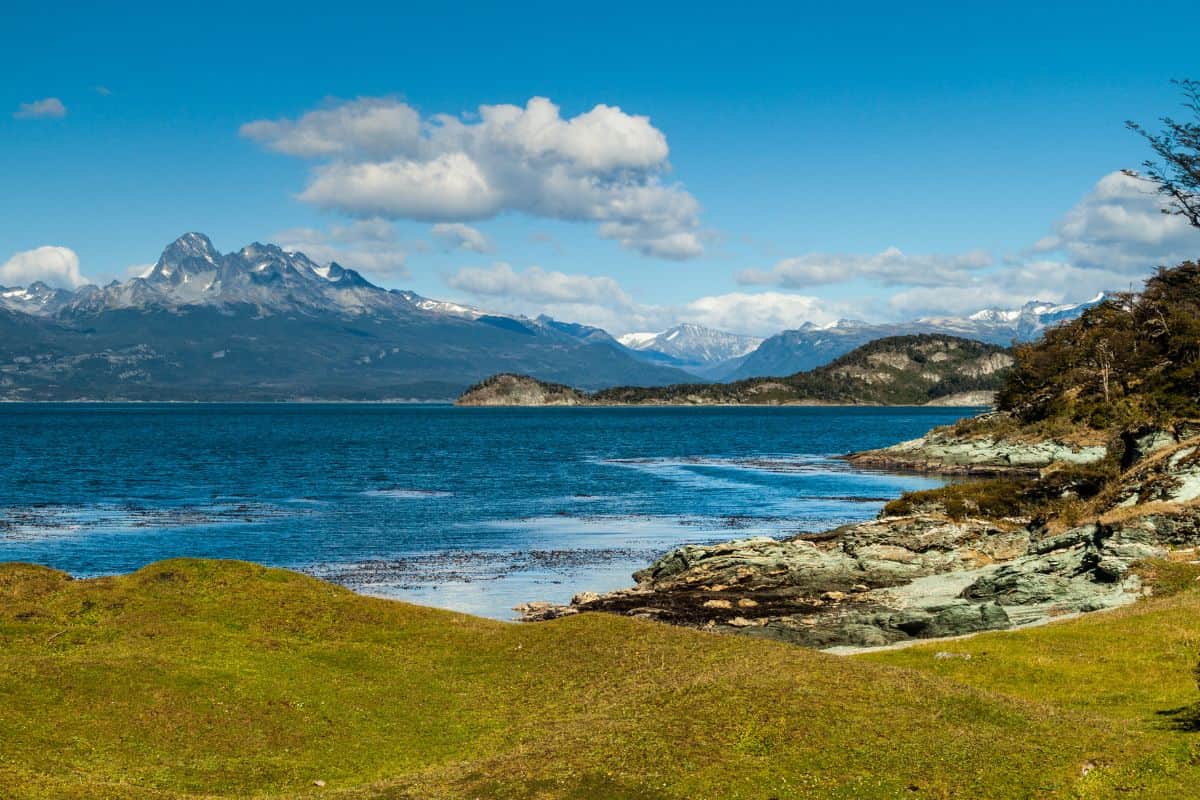Table of Contents
The Argentine flag, also known as the flag of Argentina, holds deep historical and cultural significance for the country. It represents the identity, struggles, and aspirations of the Argentine people. In this article, we will explore the intriguing aspects of the Argentina flag, including its design, symbolism, and historical background.
The Argentina flag features three horizontal bands of light blue and white, with a golden sun, the ‘Sun of May,’ at the center of the white band. The light blue color symbolizes the sky and the Virgin Mary, while the white represents the snow of the Andes. The ‘Sun of May’ symbolizes the Inca god Inti and is a tribute to the sun and independence.
Argentina Flag: Colors and Symbolism
- The design of the flag of the Argentine Republic features a horizontal tri-band of light blue, white, and light blue.
- Prominently displayed in the center of the white band is the Sun of May, a golden sun emblem.
- The symbolism of blue and white colors represent the skies and snow-capped Andes respectively.
- The flag was adopted on 27 July 1812, during the Argentine War of Independence against Spain.
- The ideology of the flag reflects the freedom and sovereignty of the Argentine Republic, emphasizing its commitment to national values and unity.
Flag of Argentina
The flag stands as a powerful symbol that encapsulates the cultural significance and spirit of the nation. Its design consists of three horizontal stripes: sky blue at the top, white in the middle, and sky blue at the bottom, with a golden sun with a human face in the center of the white stripe. The blue color symbolizes loyalty, truth, and the skies of Argentina, while the white represents peace and integrity. The sun, known as the Sun of May, holds historical and cultural significance, symbolizing the Inca god Inti and representing freedom and independence in Argentine culture.
The history of the flag is intertwined with Argentina’s rich heritage and fight for independence. Created by Manuel Belgrano on February 27, 1812, the flag represents the unity and aspirations of the Argentine people.
Beyond its aesthetics, the flag from Argentina carries deep symbolic meanings. The colors reflect the values and aspirations of the Argentine people, symbolizing loyalty, peace, and freedom. The Sun of May stands as a beacon of liberty, an emblem with historical and cultural significance in Argentine tradition. It embodies Argentina’s cultural heritage and serves as a reminder of the nation’s resilience and unity.
National Flag Etiquette and Protocol
Respecting the proper usage and display of the Argentine flag is paramount. Understanding flag etiquette is crucial, especially during national events and ceremonies. Here are guidelines to honor the flag and demonstrate proper protocol:
- Proper Handling: The Argentine flag should be handled with reverence. It should not touch the ground or floor and should be held upright.
- Hoisting and Lowering: The flag should be hoisted briskly and lowered ceremoniously. It is usually raised at sunrise and lowered at sunset, with exceptions on special occasions.
- Displaying the Flag: When displayed vertically, the Sun of May should be centered and upright. The Argentine flag should fly freely, unobstructed.
- Half-Staff: The flag is lowered to half-staff as a sign of mourning or respect on certain days or to honor the passing of notable figures.
- Flag Retirement: When an Argentine flag becomes damaged, torn, or worn out, it should be retired respectfully. Local guidelines should dictate its proper disposal.
- Flag Size and Placement: The size of the Argentine flag should be proportional to its display area or flagpole. Local guidelines can provide specifics on sizing and placement.
- Official Settings: Argentina mandates the display of its flag in all official settings. It should be shown correctly during all official functions and on government buildings.
Interesting Facts and Trivia
Delve into captivating facts and lesser-known trivia about the Argentine flag. Learn about the unique elements within the flag’s design and historical events that have shaped the nation’s identity.
Rich Tapestry of History
- 1812: The initial adoption of the flag took place on 27 February 1812, during the Argentine War of Independence.
- Sol de Mayo: The Sun of May symbolizes the Inca god Inti and Argentina’s fight for independence.
- National Identity: The flag stands as a testament to the resilience and determination of the Argentine people.
Flag-Related Symbols and Emblems
A flag is not merely a representation of a nation’s identity. Dive deeper into other national symbols and emblems intrinsically linked with Argentina, grasping their significance and connection to the flag. Understand their historical and cultural underpinnings, which will amplify your appreciation of Argentina’s heritage. It’s a pleasure to travel and embark on an Argentina tour to experience the country’s prime destinations.
Symbolisms of the Argentine Flag
The flag of Argentina contains meaningful elements reflecting the nation’s history, principles, and dreams. Here are the symbolisms of the Argentina flag in itemized form:
- Blue and White Stripes: These represent the skies and clouds. The blue and white colors also symbolize the Virgin Mary, the patron saint of Argentina.
- Sun of May: Found in the center, this golden sun represents the Inca sun god Inti and symbolizes freedom and independence.
- Flag’s Design: Represents Argentina’s aspirations, rich cultural heritage, and the unity of the Argentine people.
- National Identity: The flag stands as a potent symbol, bringing together the Argentine people and reminding them of their collective heritage and cultural identity.
- National Aspirations: Through its design and motifs, the flag represents the aspirations and values of Argentina, including freedom, unity, and heritage.
The symbolism within the flag enhances the nation’s sense of identity and pride, mirroring its historical progression and cultural importance.
Flags of Similar Countries or Regions
Exploring the flags of neighboring countries or regions can offer captivating perspectives. Analyze the flags, pinpointing commonalities in design, colors, or symbols. Discover historical and cultural ties between flags, highlighting shared influences or unique identities.
Argentine Flag vs Brazilian Flag
Similarity: Both flags feature a blue circle.
Difference: The Brazilian flag has a green field with a yellow diamond, containing a blue globe with 27 small white stars forming the Southern Cross constellation and a national motto.
Argentine Flag vs Chilean Flag
Similarity: Both flags have white and red colors.
Difference: The Chilean flag has a white horizontal stripe on top, a red one on the bottom, and a blue square on the upper hoist-side corner with a white five-pointed star.
Argentine Flag vs Uruguayan Flag
Similarity: Both flags include blue and white stripes.
Difference: The Uruguayan flag has a white field with nine blue stripes and a Sun of May in the canton corner.
Argentine Flag vs Bolivian Flag
Similarity: Both flags incorporate the color blue.
Difference: The Bolivian flag has horizontal stripes in red, yellow, and green with the national coat of arms in the center of the yellow stripe.
Argentine Flag vs Paraguayan Flag
Similarity: Both flags utilize blue, white, and red colors.
Difference: The Paraguayan flag consists of horizontal stripes in red, white, and blue, with the national coat of arms in the center of the white stripe.
Argentine Flag vs Peruvian Flag
Similarity: Both flags use the color white.
Difference: The Peruvian flag features two vertical red bands on the hoist and fly side with a white field in the middle. The state flag has the national coat of arms in the center.
Frequently Asked Questions (FAQs)
Discover answers to common questions related to the Argentine flag picture. From its historical origins to the symbolism behind its elements, find concise and informative responses that address inquiries commonly posed by those curious about Argentina’s flag
What do the colors of the Argentine flag represent?
The flag consists of three horizontal bands of light blue and white. The blue and white colors are said to represent the Virgin Mary’s protection over the nation, but there are also interpretations that attribute the colors to the sky and clouds, symbolizing the vast Argentine sky.
Who designed the flag of Argentina?
The flag was created by General José de San Martín, one of Argentina’s founding fathers, during Argentina’s struggle for independence from Spanish colonial rule.
When was the Argentine flag officially adopted?
The flag was officially adopted on July 20, 1816, shortly after Argentina declared independence from Spain on July 9, 1816.
What is the symbolism behind the Sun of May on the Argentine flag?
The “Sun of May,” a golden-yellow sun with 32 rays that alternate between straight and wavy, is a reference to the Inca sun god Inti and represents Inti’s face. It symbolizes the Incan influence on the nation and also the appearance of the sun breaking through the clouds as a new nation is born.
Does the Argentine flag undergo any changes or modifications?
The essential design of the Argentine flag has remained consistent since its adoption in 1816. However, there might be slight variations in the shade of blue used or the detailed features of the Sun of May in different renditions of the flag.
How is the Argentine flag displayed during national events?
During national events, the Argentine flag is displayed prominently in government buildings, public places, and educational institutions. It is hoisted to the top of the flagpole during national anthem performances and at other significant moments to honor the nation and its history.
How is the Argentine Flag Day celebrated?
Flag Day in Argentina is celebrated on June 20th every year, commemorating the death of Manuel Belgrano, the creator of the flag. It is a public holiday, and events often include the ceremonial raising of the flag, parades, and educational activities focusing on the history and symbolism of the flag.
Can the Argentine flag be used in advertising or for commercial purposes?
The use of the Argentine flag in advertising or for commercial purposes is regulated by law to prevent misuse or disrespect to the national symbol. Generally, any depiction that maintains the dignity and respect of the flag is permissible.
How is the Argentine flag used in mourning or to commemorate important individuals?
During periods of national mourning or to commemorate important individuals, the Argentine flag may be flown at half-mast as a sign of respect and mourning.
Are there any specific guidelines for the proper disposal of a worn-out Argentine flag?
Like many nations, Argentina has guidelines for the respectful disposal of worn-out flags. Generally, when a flag is too worn to continue to be displayed, it should be destroyed in a dignified manner, such as by burning it in a respectful ceremony. It is essential to treat the flag with the utmost respect at all stages of its lifecycle.

























